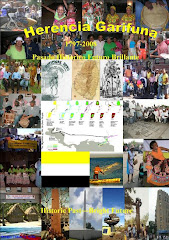Club Tragedy an Awakening for Garifuna
By Edna Negron
Jury Gets Replay of Confession
A tropical breeze permeated the air in the
"¿Ida biña nidugeñu?" Bonilla asked. "How are you, my family?" Bonilla a native of
Miranda and Bonilla are members of an emerging immigrant community in
Although Garinagu have been migrating to the
Fifty nine of the
As the trial of Julio Gonzalez unfolds in the
"
Black Caribs are racially mixed people who are descendants of 18th Century Carib Indians and African Free-Slaves. After they reveled against the European colonization during the late 1700s, they were deported from the
While they share Roman Catholic religious belief, Garifunas maintain practices of their own culture, such as the traditional dance called Punta, which is danced after nine days of praying the rosary and is dedicated to the souls of the deceased.
For months, members of MUGAMA and the United Garifuna Association have been surveying Garifuna families in an attemp to identify their housing, education and business needs. They grant Garifuna students who are eligible for English as a second language and bilingual services in the
For the most recent Garifuna immigrants coming from economically strained
The impetus to organize, leaders say, was the pain and confusion family members experienced when they tried to get help after the
"One of the problems was that the people didn't understand how the system works, how to get assistance" said José Francisco Avila, a
So last month, for the first time in
"We want economic participation" said Miranda a member of the United Garifuna Association, a Brooklyn-based organization. "But we have a great number of High School dropouts."
The Board of Education alerted school districts by memo about the growing number of Garifuna children, many of whom are Spanish-speaking; while some from remote towns in
"These Garifuna children were not receiving services in the school system." Meanwhile in the
"We talk about it a lot then, and we still talk about it. Everytime we meet in a restaurant or hall we always remember the tragedy," Mauricio said. "From then on,






No comments:
Post a Comment